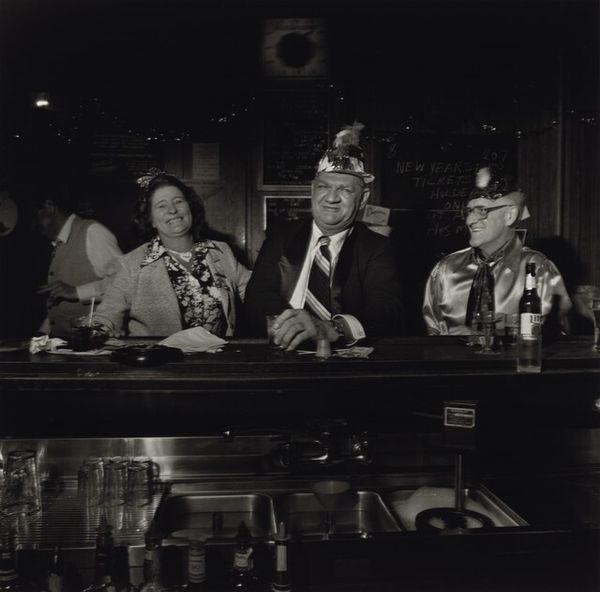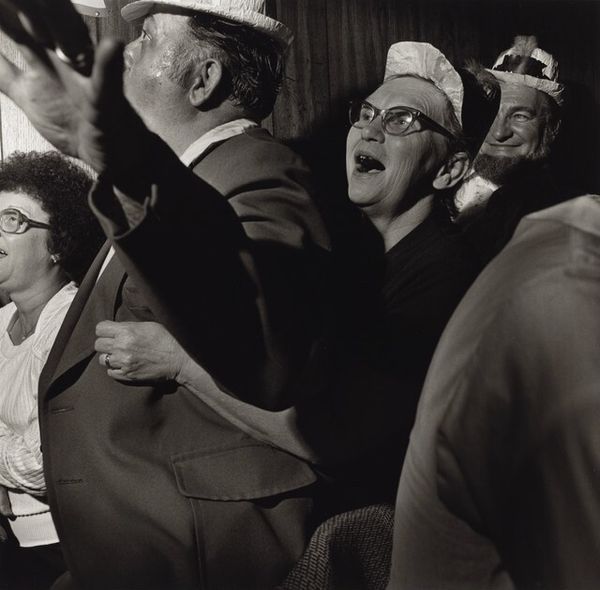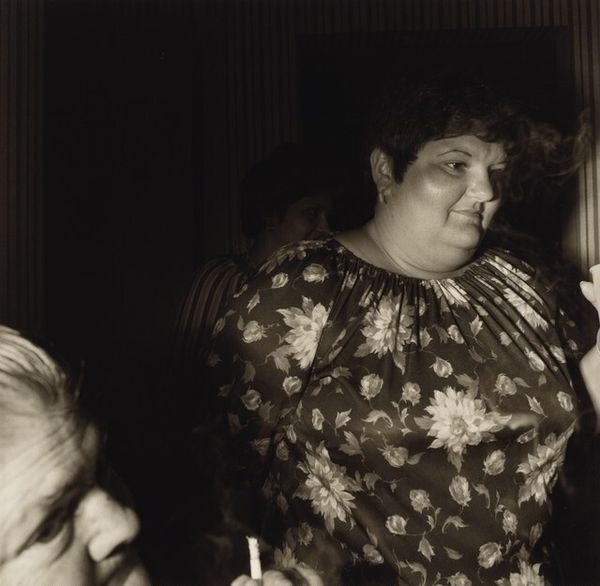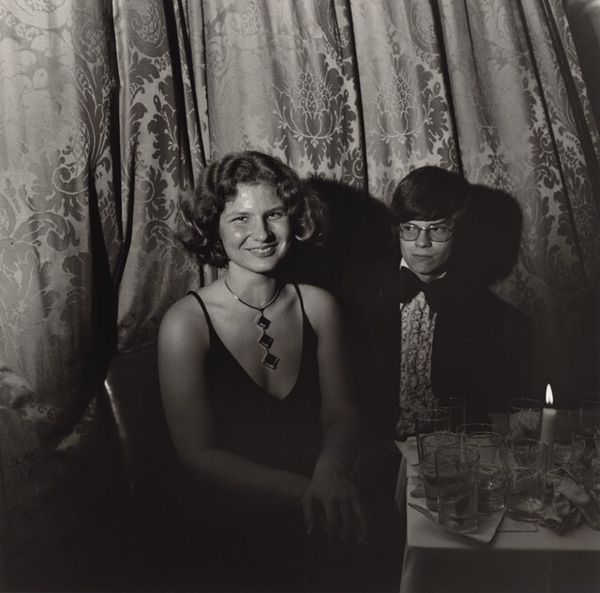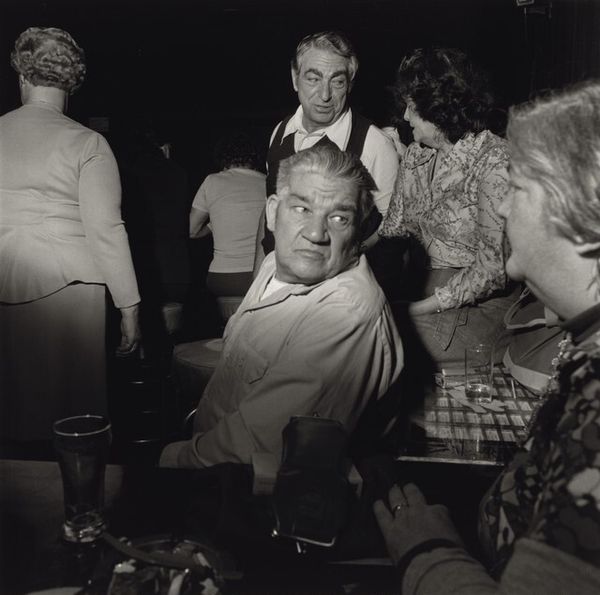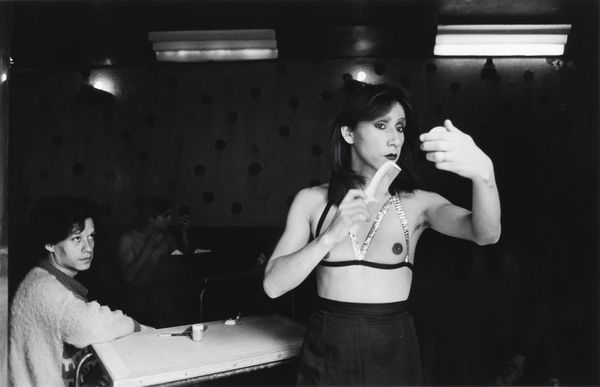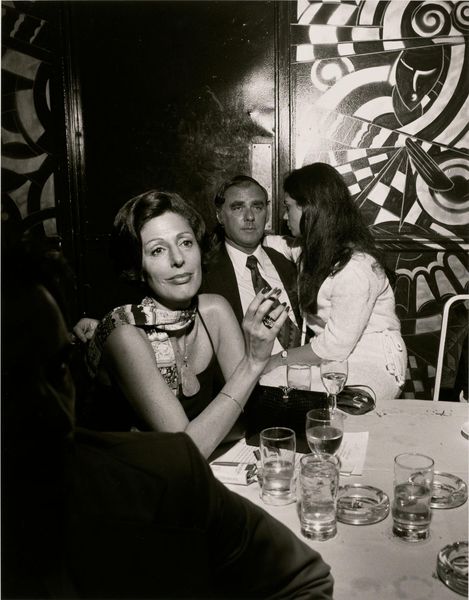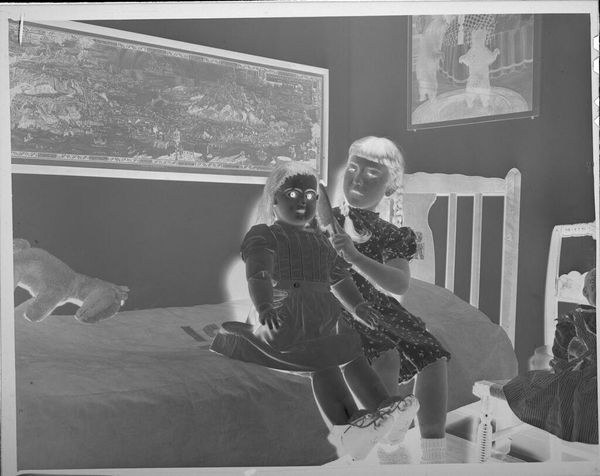
photography, gelatin-silver-print
#
portrait
#
black and white photography
#
archive photography
#
photography
#
historical photography
#
black and white
#
gelatin-silver-print
#
monochrome photography
#
genre-painting
#
modernism
Dimensions: image: 37.5 × 38.1 cm (14 3/4 × 15 in.) sheet: 50.2 × 40.3 cm (19 3/4 × 15 7/8 in.)
Copyright: National Gallery of Art: CC0 1.0
Editor: This is Larry Fink’s "New Year's Eve, American Legion, Bangor, Pennsylvania" from 1980, a gelatin-silver print. There's such a strong feeling of intimacy and community in this image, but there's also something melancholic about it. How do you interpret this work? Curator: Fink’s photography often reveals the hidden narratives of class and social interaction. In this image, we're invited into a seemingly private moment within a public celebration. Notice the contrast between the older gentleman in his celebratory hat, almost proudly displaying himself for the camera, and the embracing women, partially obscured, engaged in their own intimate ritual. Editor: Yes, there’s a definite contrast. The man seems so present, almost posing, while the women are caught in a more private moment. Curator: Consider the setting – an American Legion. What does that space signify, and how does it impact our reading of the image? Think about the portrait photographs lining the wall. How do these images of men, likely veterans, add another layer to our understanding of masculinity, community, and belonging represented here? How do you think Fink is engaging with ideas around gender and visibility? Editor: I see what you mean. The space itself speaks to a specific type of community, mostly men who have served. It's like Fink is placing this spontaneous moment of celebration against this backdrop of defined roles and expectations. Curator: Exactly. By framing these individuals within the context of the American Legion, Fink highlights the complex ways in which we negotiate our identities within prescribed social structures. This photo goes beyond a simple New Year's celebration; it’s about unpacking the intersectionality of identity, place, and belonging. Editor: That gives me a lot to think about regarding the deeper meanings embedded in such an ordinary-seeming scene. Curator: Indeed, art allows us to see the world through a different lens. Fink invites us to reflect on who is seen, who is unseen, and the power dynamics at play within spaces of celebration.
Comments
No comments
Be the first to comment and join the conversation on the ultimate creative platform.
